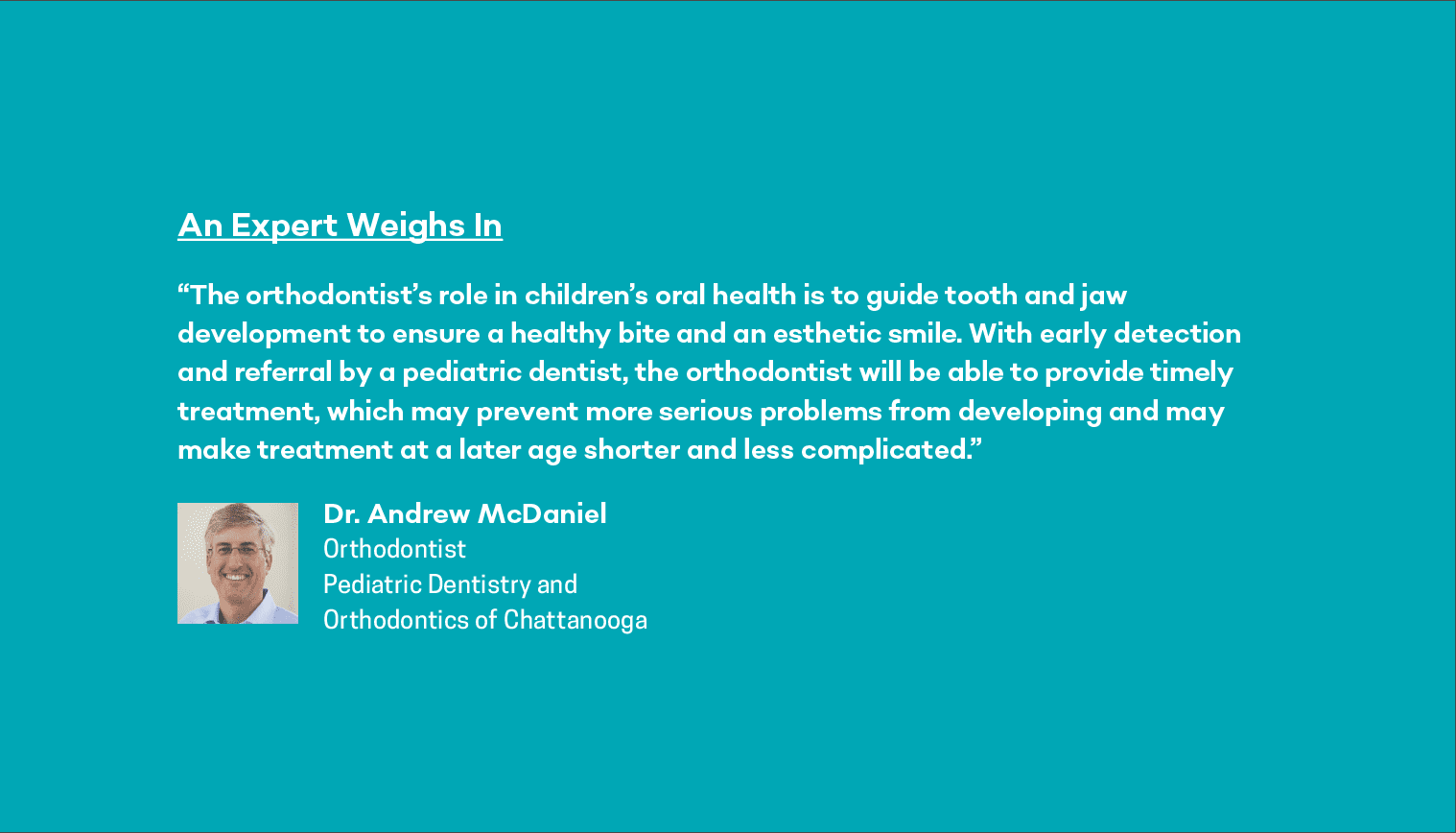For children suffering from crooked or crowding teeth, or for those faced with an overbite, underbite, or crossbite, certain daily activities like chewing food and brushing and flossing can be difficult. Fortunately, in addition to creating a beautiful smile, orthodontic care can protect teeth from unnecessary wear, prevent periodontal (gum) diseases, and correct jaw problems and malocclusion, or “bad bite.”
Getting Evaluated
The American Association of Orthodontists recommends that children receive an initial orthodontic evaluation by age 7. At this age, orthodontists are able to spot subtle problems with jaw growth and emerging teeth while many of the baby teeth are still present. Following an initial evaluation, orthodontic treatment may be recommended. If your child is not ready for treatment, the orthodontist may advise periodic visits to monitor your child’s jaw growth and tooth development.
Treatment Phases
If your child’s orthodontist recommends treatment, there are three stages you should be prepared for:
Phase 1: Early Intervention
Phase 1 orthodontics typically occur between the ages of 6 and 9, when any problems with jaw growth or tooth development are likely to show up. Treatment during this phase typically lasts around nine to 12 months and can include a number of different therapies including braces, expansion appliances, specialized retainers, space maintainers, and more.
Phase 2: Comprehensive Treatment
Comprehensive orthodontic treatment commences when most, if not all, of the permanent teeth are present, usually between the ages of 11 and 14. It can serve as stand-alone treatment or as a follow-up to phase 1 treatment in more complex cases. Usually during treatment, brackets and wires or clear aligners are used to help move the teeth. If jaw growth is a concern, other appliances can be used along with braces to encourage proper growth.
Phase 3: Retention
Once your child’s teeth have been properly aligned, the braces will be removed, and the orthodontist will create a custom retainer to ensure that the teeth do not move back to their original position. During this phase, the jawbone will reform around the realigned teeth to stabilize them.
The Role of Your Pediatric Dentist
Your child’s pediatric dentist plays an important role both before and during the orthodontic treatment process. They are trained to recognize bite problems in your child that may warrant further evaluation by the orthodontist. During orthodontic treatment, your child will need to continue to visit their pediatric dentist for regular checkups and cleanings to ensure that the teeth and gums stay healthy while braces are in place. HS


